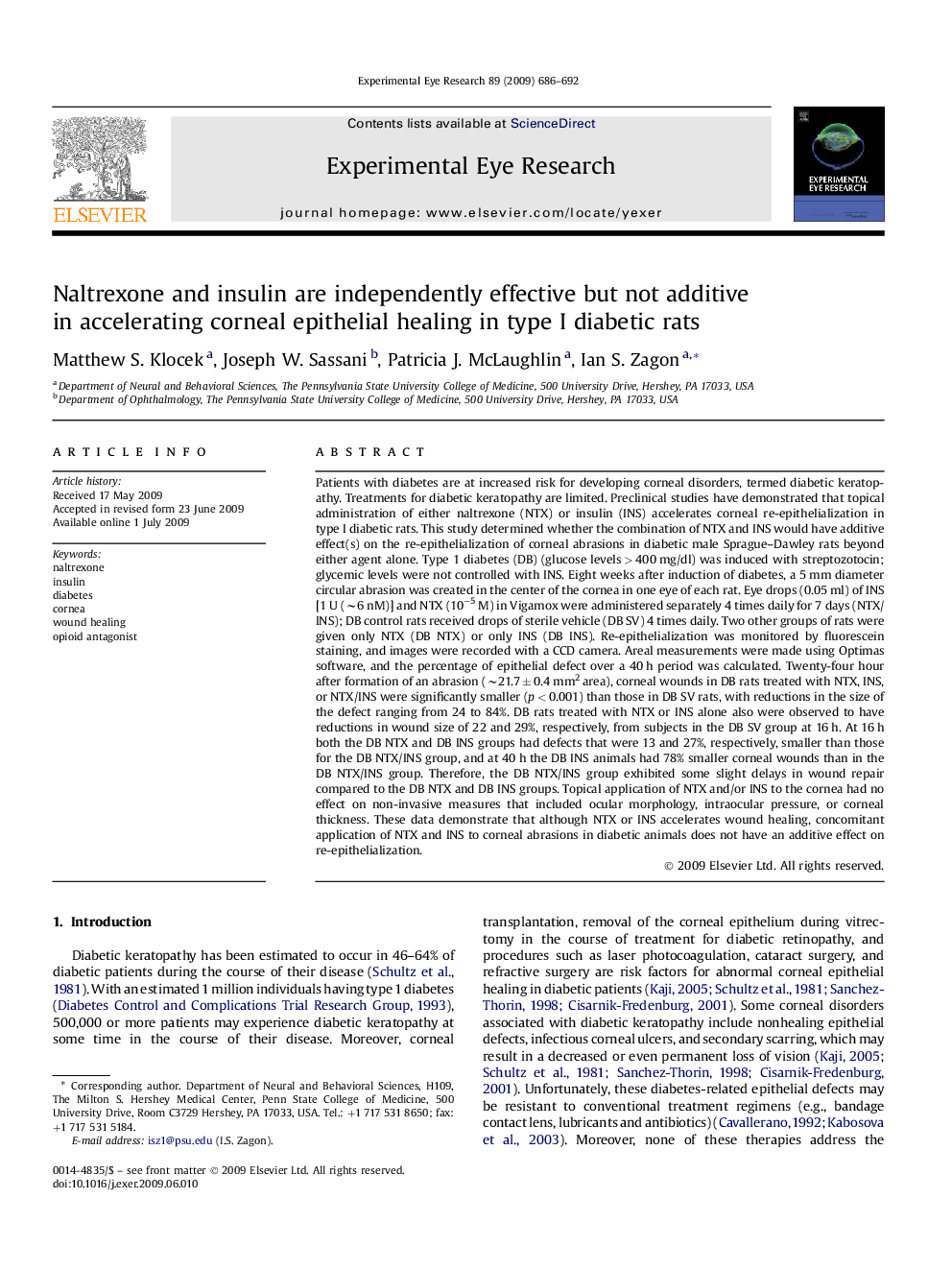| Article ID | Journal | Published Year | Pages | File Type |
|---|---|---|---|---|
| 4012136 | Experimental Eye Research | 2009 | 7 Pages |
Abstract
Patients with diabetes are at increased risk for developing corneal disorders, termed diabetic keratopathy. Treatments for diabetic keratopathy are limited. Preclinical studies have demonstrated that topical administration of either naltrexone (NTX) or insulin (INS) accelerates corneal re-epithelialization in type I diabetic rats. This study determined whether the combination of NTX and INS would have additive effect(s) on the re-epithelialization of corneal abrasions in diabetic male Sprague-Dawley rats beyond either agent alone. Type 1 diabetes (DB) (glucose levels > 400 mg/dl) was induced with streptozotocin; glycemic levels were not controlled with INS. Eight weeks after induction of diabetes, a 5 mm diameter circular abrasion was created in the center of the cornea in one eye of each rat. Eye drops (0.05 ml) of INS [1 U (â¼6 nM)] and NTX (10â5 M) in Vigamox were administered separately 4 times daily for 7 days (NTX/INS); DB control rats received drops of sterile vehicle (DB SV) 4 times daily. Two other groups of rats were given only NTX (DB NTX) or only INS (DB INS). Re-epithelialization was monitored by fluorescein staining, and images were recorded with a CCD camera. Areal measurements were made using Optimas software, and the percentage of epithelial defect over a 40 h period was calculated. Twenty-four hour after formation of an abrasion (â¼21.7 ± 0.4 mm2 area), corneal wounds in DB rats treated with NTX, INS, or NTX/INS were significantly smaller (p < 0.001) than those in DB SV rats, with reductions in the size of the defect ranging from 24 to 84%. DB rats treated with NTX or INS alone also were observed to have reductions in wound size of 22 and 29%, respectively, from subjects in the DB SV group at 16 h. At 16 h both the DB NTX and DB INS groups had defects that were 13 and 27%, respectively, smaller than those for the DB NTX/INS group, and at 40 h the DB INS animals had 78% smaller corneal wounds than in the DB NTX/INS group. Therefore, the DB NTX/INS group exhibited some slight delays in wound repair compared to the DB NTX and DB INS groups. Topical application of NTX and/or INS to the cornea had no effect on non-invasive measures that included ocular morphology, intraocular pressure, or corneal thickness. These data demonstrate that although NTX or INS accelerates wound healing, concomitant application of NTX and INS to corneal abrasions in diabetic animals does not have an additive effect on re-epithelialization.
Related Topics
Life Sciences
Immunology and Microbiology
Immunology and Microbiology (General)
Authors
Matthew S. Klocek, Joseph W. Sassani, Patricia J. McLaughlin, Ian S. Zagon,
